Boiling Brake Fluid: How Does It Affect Car Braking Performance
Posted on September 22, 2025

Brake fluid might not be the first thing you think about when it comes to vehicle maintenance, but it’s one of the most important. It’s the lifeblood of your braking system, transferring the force from your foot on the pedal into the stopping power that keeps you safe on the road.
The problem is that many drivers overlook it, assuming that as long as the brakes feel fine, everything is working perfectly. Unfortunately, that’s not always the case.
Understanding why brake fluid boils, how it affects braking performance, and how to prevent it can help you keep your vehicle running safely and smoothly. In this post, we’ll break it all down so you can avoid trouble before it starts.
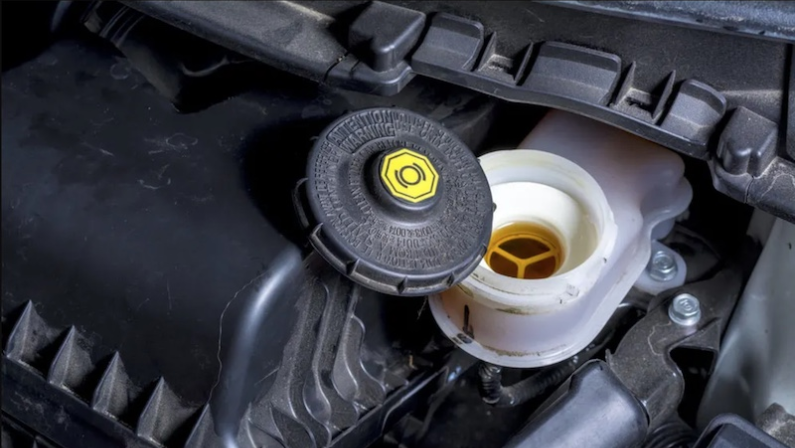
Understanding Brake Fluid
Brake fluid is one of the most vital yet overlooked fluids in your vehicle. Without it, your braking system simply wouldn’t work. It’s designed to operate under extreme pressure and temperature to ensure that every press of the pedal translates into reliable stopping power.
Using the right type and keeping it in good condition is essential for safety, as the wrong formulation (or degraded fluid) can seriously affect performance.
1. Function of Brake Fluid
Brake fluid serves as the hydraulic link between your brake pedal and the brake components at each wheel. When you press the pedal, the fluid transfers this force through the brake lines to create the pressure that activates the brake pads or shoes.
This process happens almost instantly, even under high heat and stress. However, if the fluid becomes contaminated or overheats, its ability to transfer pressure effectively can drop, leading to soft or unresponsive brakes.
2. Types of Brake Fluid
Not all brake fluids are created equal, and using the right one is key to keeping your braking system working safely and efficiently. Each type has its own chemical makeup, boiling point, and performance characteristics, which determine how it handles heat, moisture, and wear over time.
Here’s a quick breakdown of the most common types:
- DOT 3: A glycol-based fluid with an amber color. It has the lowest dry boiling point and is commonly used in many standard vehicles.
- DOT 4: Also, glycol-based but with a higher boiling point than DOT 3, making it better for vehicles that generate more braking heat, like some international or performance models. It costs more due to added chemicals but can lose boiling point strength over time.
- DOT 5: A silicone-based fluid with a purple color and a high boiling point. It doesn’t absorb water like glycol-based fluids, but it should never be mixed with other brake fluids.
- DOT 5.1: Glycol-based like DOT 3 and DOT 4 but formulated to meet DOT 5 performance standards. It usually ranges from light amber to clear and offers a high boiling point.
- DOT 2: Mineral oil-based with low boiling points. It’s rarely used in cars today and is more common in other applications.
Choosing the correct brake fluid for your vehicle ensures optimal braking performance, especially under extreme temperatures or heavy use.
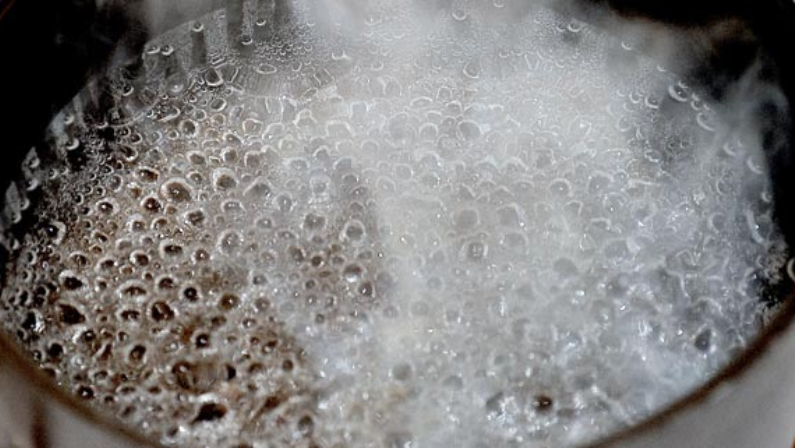
Brake Fluid Boiling Points
Every type of brake fluid is designed to handle specific temperatures, which are set by the Department of Transportation (DOT) and the Society of Automotive Engineers.
The boiling point is important because once brake fluid reaches this temperature, it can turn into vapor, leading to reduced braking power or even brake failure.
Different DOT fluids have different boiling points and are made for different uses.
For example, DOT 3 works well for everyday driving, while DOT 4 has a higher boiling point, making it better for high-performance cars, heavy-duty trucks, or vehicles used in demanding conditions.
In general, the higher the boiling point, the better the fluid can handle extreme heat without losing performance. However, not every vehicle is compatible with all brake fluid types, so you need to always check your owner’s manual before switching.
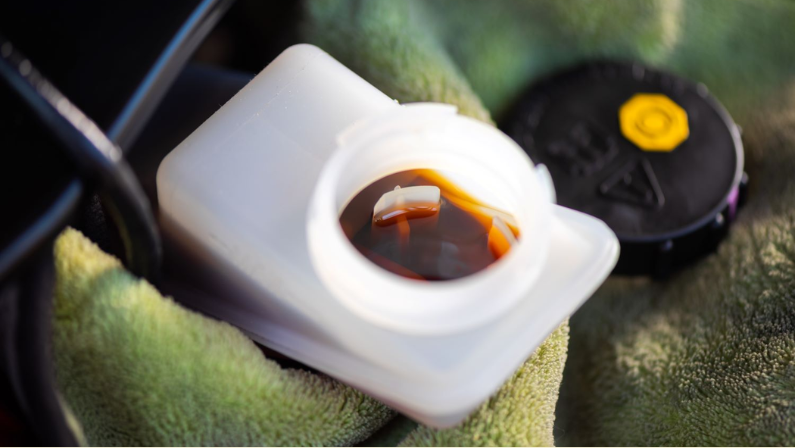
Causes of Boiling Brake Fluid
Boiling brake fluid happens when the temperature in your braking system gets high enough to turn the fluid into vapor, which can seriously reduce braking performance. Several factors can contribute to this, and understanding them can help you prevent potential brake failure.
1. Friction
When your brake pads press against the rotors, friction is created to slow down your vehicle. This friction also generates heat. In situations where the brakes are used heavily, the heat can build up quickly and transfer to the brake fluid, raising the risk of it reaching its boiling point.
2. Prolonged Braking
Driving down steep hills or mountains, especially without using engine braking, means your brakes are working continuously. This constant pressure produces sustained heat, which can push brake fluid temperatures dangerously high.
3. Towing and High-Speed Stops
Pulling heavy loads or making repeated high-speed stops puts extra strain on your braking system. The added weight or energy from higher speeds increases the heat generated during braking, making it easier for the brake fluid to boil.
4. Contaminated or Old Brake Fluid
Over time, brake fluid can absorb moisture from the air, lowering its boiling point. Contaminated or aged brake fluid will boil more easily than fresh fluid, which is why regular brake fluid flushes are essential for safe, consistent braking performance.
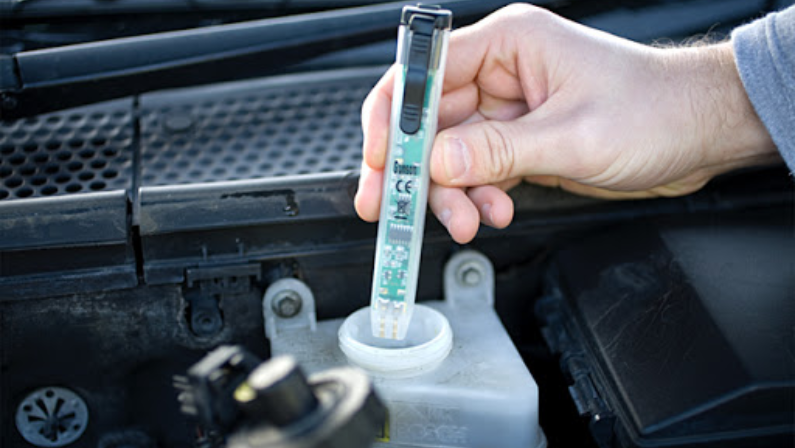
Signs Your Brake Fluid May Have Boiled
When brake fluid boils, it creates air bubbles in the brake lines, which can seriously affect braking performance. Recognizing the signs early can help you avoid dangerous situations and costly repairs.
1. Soft or Spongy Feeling When Pressing the Brake Pedal
If your brake pedal feels soft or sinks farther than usual when pressed, it could mean vapor has formed in the brake lines, reducing hydraulic pressure. This is one of the most common signs of boiled brake fluid.
2. Increased Stopping Distances
Boiled brake fluid can’t transfer braking force effectively, meaning you’ll need more distance to bring your car to a complete stop. This is especially dangerous in emergency situations.
3. A Brake Warning Light on the Dashboard
Modern vehicles have sensors that can detect issues in the braking system. If your brake warning light comes on after heavy braking, it’s a sign you should inspect your brake fluid immediately.
4. A Burning Smell After Heavy Braking
A sharp, burning odor after intense braking may indicate excessive heat in your braking system, which could lead to or already have caused the brake fluid to boil.
5. Discolored, Dark, or Cloudy Brake Fluid
Fresh brake fluid is typically clear to light amber. If yours looks dark, cloudy, or dirty, it may be contaminated or degraded, lowering its boiling point and increasing the risk of boiling under stress.
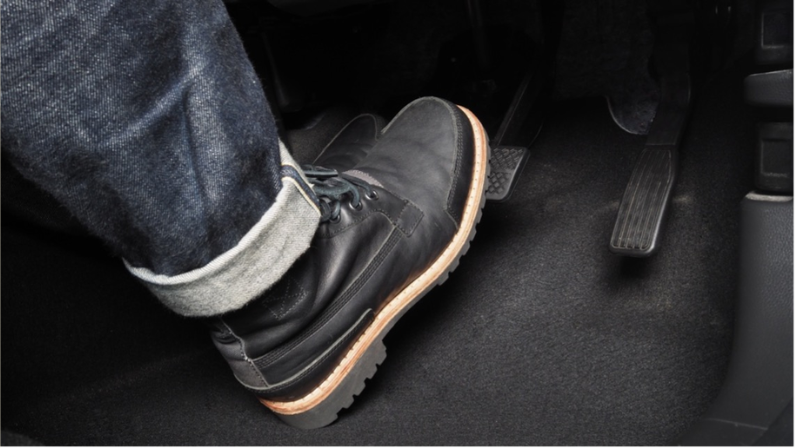
How To Handle Brake Fluid Boil
If your brake fluid boils while driving, you need to act quickly to stay safe and prevent further damage to your braking system. Here’s what you should do:
1. Stop the Vehicle
As soon as you notice signs of brake fluid boil (like a spongy pedal or reduced braking power) find a safe place to pull over. Continuing to drive can make the problem worse and put you at risk of losing braking ability completely.
2. Let the Brakes Cool
Heat is the main cause of brake fluid boiling, so giving your brakes time to cool down is essential. Avoid touching hot components, and allow enough time for both the brake fluid and metal parts to return to a safe temperature before driving again.
3. Check Your Brakes
Once cooled, test your brakes gently in a safe area to see if performance has improved. If the pedal still feels soft or braking is weak, it’s best to have your vehicle towed to a mechanic. You may need a brake fluid flush, repairs to the braking system, or replacement of damaged components.
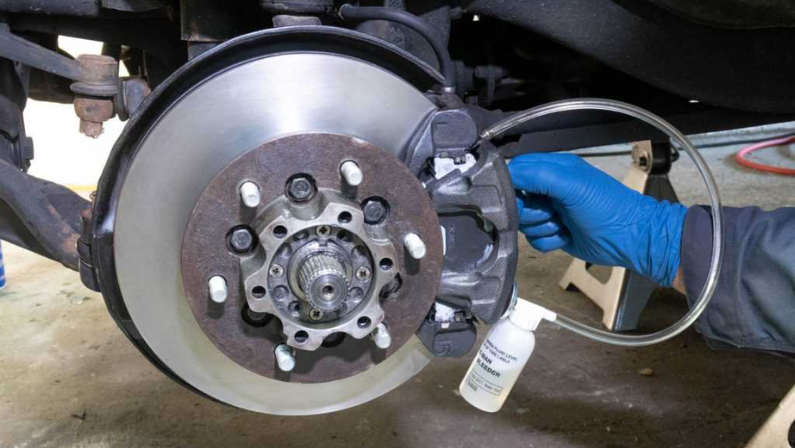
How To Prevent Brake Fluid from Boiling
Preventing brake fluid from boiling is all about reducing heat buildup and keeping your braking system in top condition.
Here are some effective ways to protect your brakes and maintain safe stopping power:
1. Keep Your Brakes Cool
Whenever possible, give your brakes time to rest between heavy uses. If you’re driving in stop-and-go traffic or on winding roads, avoid constant hard braking to reduce heat buildup.
2. Flush and Replace Brake Fluid Regularly
Over time, brake fluid absorbs moisture, lowering its boiling point. Regularly flushing and replacing it (based on your manufacturer’s recommendations) helps maintain optimal performance and heat resistance.
3. Use High-Quality Brake Fluid
Choose brake fluid with a higher boiling point, especially if you drive in extreme conditions, tow heavy loads, or participate in high-performance driving. Always check your owner’s manual to ensure compatibility.
4. Avoid Riding Brakes Downhill
Keeping your foot on the brake pedal for long periods while going downhill generates continuous heat. Instead, use short, firm braking intervals to control speed.
5. Use a Lower Gear
When driving down steep slopes, shift to a lower gear so the engine helps slow the vehicle. This reduces the amount of work (and heat) your brakes have to handle.
6. Upgrade Your Brakes
If you frequently drive in conditions that generate high brake temperatures, consider upgrading to performance brake pads, larger rotors, or improved brake cooling systems. These can help your brakes handle more heat without risking fluid boiling.
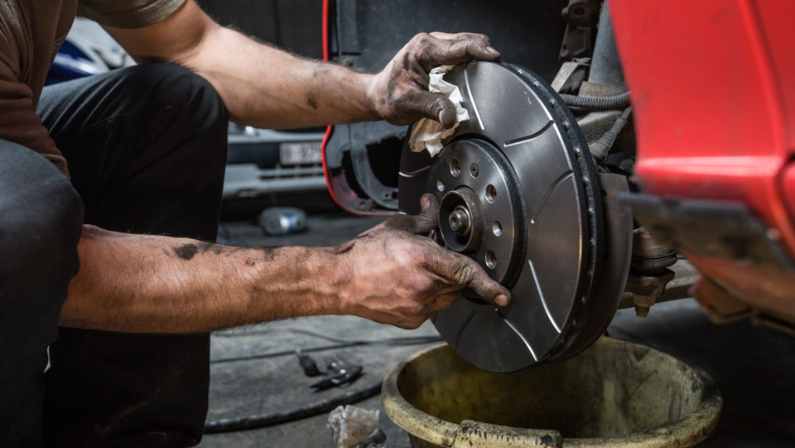
Maintain Your Brakes, Maintain Your Safety
Boiling brake fluid might not be something you think about often, but it can have a big impact on your safety and your vehicle’s braking performance. Understanding what causes it, how to spot the signs, and ways to prevent it will help you keep your brakes in top shape and ready for anything the road throws at you.
If you want peace of mind that your braking system is working at its best, experts at CarHub North York Chrysler are here to help. Our team offers a peace of mind inspection for your brakes, along with brake fluid flush and replacement, plus full brake system maintenance to ensure you stop safely and confidently every time.
Don’t wait until there’s a problem. Book your brake service with us today and hit the road with confidence.
